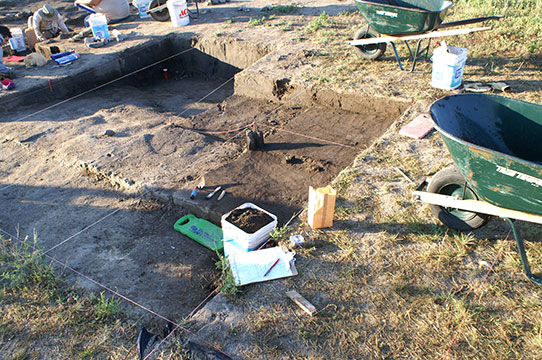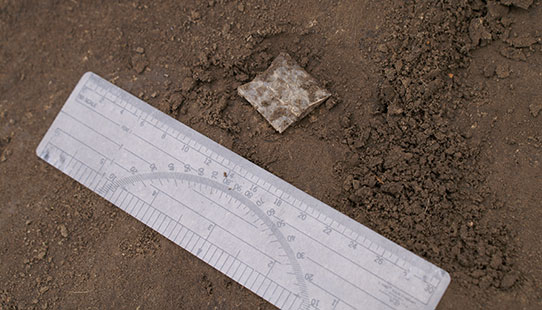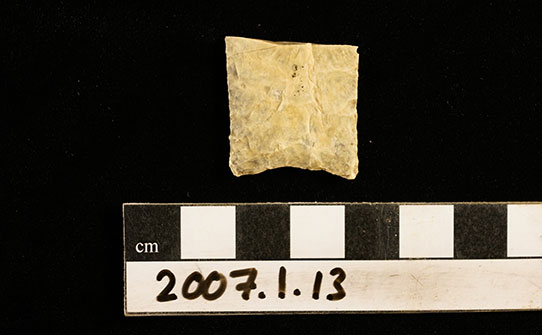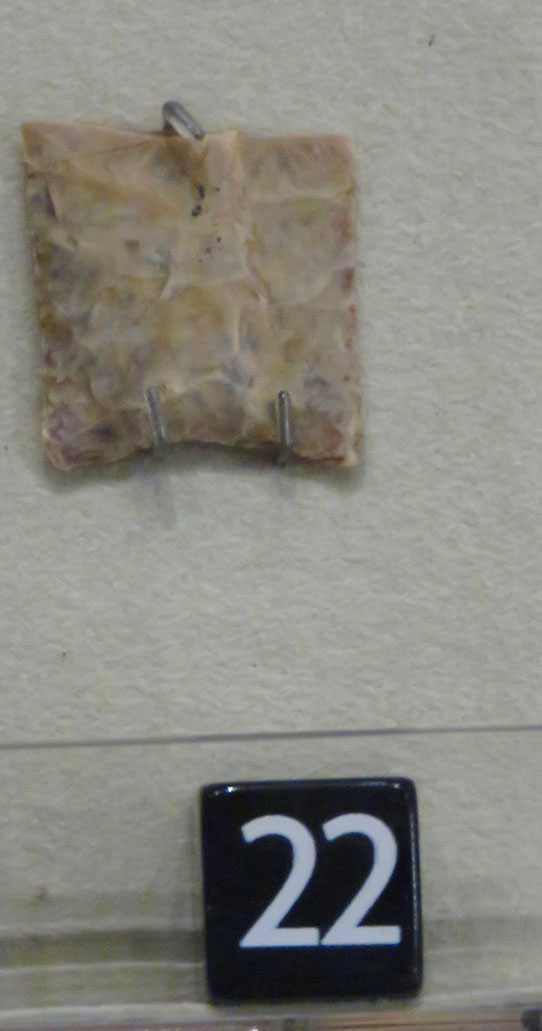"Steinkern" Fossil Pipe Bowl
Adrienne Mayor’s (2005) volume, Fossil Legends of the First Americans, has sparked the interest of archaeologists in vertebrate and invertebrate fossils and other natural curios that occur in museum collections across the world. An interesting example is a steinkern or fossil bivalve shell pipe bowl from an unknown Ohio location. The specimen was donated to the State Historical Society of North Dakota by a private collector in the 1930s.
Derived from German, steinkern translates to “stone kernel.” These internal cast fossils are formed by “…consolidated mud or sediment that filled the hollow interior of a fossil shell (such as a bivalve shell) or other structure. Also, the fossil thus formed after the dissolution of the mold.” [1]

Three Views of a Fossil Bivalve Shell Pipe Bowl (#3684, Grassick Collection). Photographs by Meagan G. Schoenfelder, SHSND.
The pipe bowl has been smoothed along the rim while retaining its exterior natural finish characteristic of the bivalve shell periostracum (outermost layer of the shell). A small, circular, straight-sided draft hole is located near the beak on the hinge line of the fossil shell that corresponds with the bowl heel to accommodate the insertion of a small-bore stem. Dark residue or cake occurs on the rim and in the chamber.
Pipe bowl decorations may involve a variety of design elements, including animate and inanimate representations, depending on the stone, clay, or wood materials used to craft the object.
Typically, fossils are not the domain of archaeologists, as they do not lend insight to the human past. But this object is an excellent example of how paleontology and archaeology can occasionally converge. The eminent paleontologist Theodore E. White aptly characterized the significance of fossils for archaeology and paleontology nearly seventy years ago, “No historical resume of paleontology in the Missouri Basin, however brief, would be complete without mention of the fragments of fossil bone and leaves found by archeologists in the Indian village sites. Apparently these fragments were brought into camp as curiosities. Occasionally the fossils were used as ornaments … The data on the uses made of fossils by the Indians … should be collated.” [2]
Fossil ornaments and other curios (e.g., fossil snail beads and concretion bowls) occur in regional archaeological assemblages. I am not aware of similar steinkern examples akin to the one described here from sites in North Dakota. I continue to research how fossils were integrated in the lives and cultures of people in the past.
1Dictionary of Geological Terms, Third edition, Robert L. Bates and Julia A. Jackson, eds., Anchor Books, New York, NY, 1984, page 384.
2A Preliminary Appraisal of the Paleontological Resources of Certain Basins and Reservoirs in the Missouri River Basin, Theodore E. White, August 1948, page 2. Manuscript on file, Archaeology and Historic Preservation Division, State Historical Society of North Dakota, Bismarck, ND.





 Since the discovery of number “22,” I have had the opportunity to volunteer on a number of North Dakota archaeological projects and serve as president of the North Dakota Archaeological Association. Each project is unique and brings to light a variety of interesting artifacts, each with its own story. None, though, hold the personal fascination for me that little number “22” holds.
Since the discovery of number “22,” I have had the opportunity to volunteer on a number of North Dakota archaeological projects and serve as president of the North Dakota Archaeological Association. Each project is unique and brings to light a variety of interesting artifacts, each with its own story. None, though, hold the personal fascination for me that little number “22” holds.